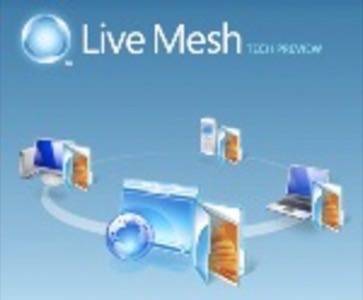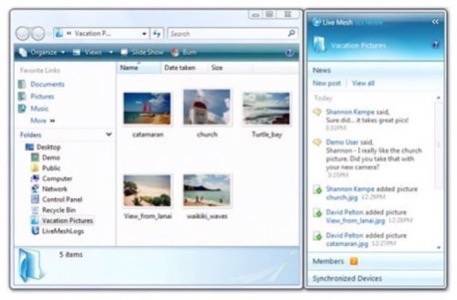Windows Live Mesh is Microsoft’s software+services data synchronization platform. Because of its complex nature, most people assume that file synchronization is all there is to Live Mesh, but in reality, that’s just the tip of the iceberg. Microsoft has big plans for the service and syncing files between computers and the cloud is just the start. When Live Mesh launched, it was currently a closed “technical preview” (that’s Microsoft for “beta”). But now it appears that the Live Mesh guys have quietly opened up the platform for all of the U.S.

LiveSide reported last night that folks were able to sign up for Mesh if they were in the U.S. and this morning, they confirmed this to be the case.
The official announcement was made in the Live Mesh Forum. It read:
Live Mesh is now openly available to anyone in the U.S.
The Live Mesh team is pleased to announce that anyone in the U.S. can now use Live Mesh just by signing in to www.mesh.com with a valid Windows Live ID. No sign up needed to participate!
International Customers
With Live Mesh open to anyone in the US, our international friends can join in the fun early as well – with one caveat: you must be willing to change your Windows operating system region and language setting to EN-US. Once you do this you will be able to immediately sign in to Live Mesh with a valid Windows Live ID. Please be aware that this may cause other applications that specifically require your native country region and language settings to encounter problems.
Feedback
Once you’ve begun using Live Mesh, we’d love to hear from you! We are working hard to create the best experience and appreciate any feedback you have. Please send us feedback using our online form. You can also submit (and view others’) feedback and bugs here on the Microsoft Connect website.
Thank you,
The Live Mesh team
About Live Mesh
For those of you unfamiliar with the service, one of the main things you need to know is that at the moment, the service is Windows-only. However, Microsoft has confirmed in the past that a Mac client is in the works. Eventually it will work with mobile devices, too. Certainly those will include Windows Mobile, but also any other devices that permit it to run. They should have some takers, though, because Mesh isn’t built with proprietary code, but rather with open protocols that most web developers are familiar with, including HTTP, RSS, REST, ATOM and JSON. Although Mesh’s FeedSync is new, it is an XML protocol based on ATOM and RSS.

With Mesh running on your computers, you can simply right-click any folder and choose “Add to Mesh.” By doing so, that folder and all the files it contains are synchronized with all of your other computers you’ve added to your personal Mesh. It also syncs those files to the Live Mesh Desktop, which is Mesh’s “cloud” – an online web site you can access from any computer. At the moment, the online storage is limited to 5 GB, but that could change in the future. However, Mesh’s recent update allows you to set folders to sync via peer-to-peer, bypassing Live Desktop.
A Live Mesh Folder

When folders are Mesh-enabled, a small panel appears to the right of the folder in explorer which catalogs any changes to the folder (file adds/moves/deletions) as well as notes and comments left by any of the folder’s members.
Some people have compared Mesh to Apple’s Mobile Me (I discussed this on my personal site not too long ago), but that’s a little bit off the mark. Where Mobile Me is a consumer-focused product that offers sync and cloud storage, too – the difference is that Mesh is actually a platform. A service like Mobile Me could be built on Mesh, for example, so what you’re seeing today with the file sync is sort of like a demo app of what the Mesh platform can do. However, that being said, we hope to see Mesh doing more than file sync in the future.
You can read our initial review of the service here
.










